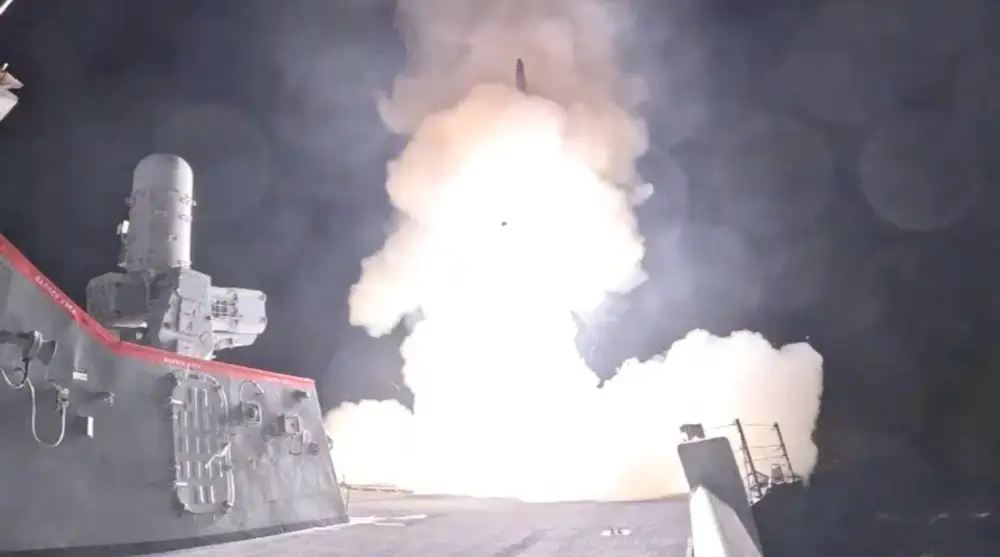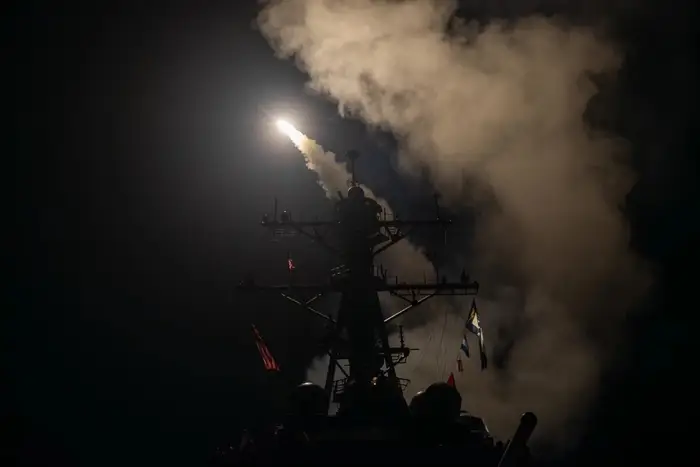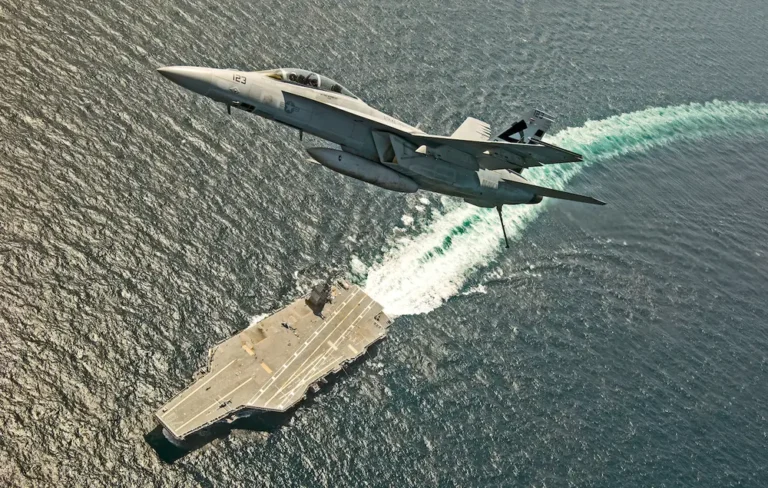The US Navy fired nearly $2 billion in weapons over a year of fighting in the Middle East

A US Navy warship fires an interceptor to engage Iranian ballistic missiles launched at Israel in October.
The US Navy has fired off nearly $2 billion worth of munitions since it began intense combat operations in the Middle East a little over a year ago.
Navy warships and aircraft on station in and around the Middle East expended $1.85 billion in munitions on fights in the region between October 7, 2023, to October 1, 2024, a Navy spokesperson confirmed to B-17 on Thursday.
The substantial figure covers the Navy’s campaign against the Houthis in the Red Sea, which is ongoing, and its efforts to defend Israel from attacks by Iran and its proxies, the official said. That defense includes two instances over the past year in during American warships operating in the eastern Mediterranean Sea shot down Iranian ballistic missiles.
The Houthis began attacking merchant shipping lanes in the Red Sea and the Gulf of Aden shortly after Hamas carried out its October 7 massacre in Israel, and they have also launched missiles and drones at Israel in protest of its devastating Gaza war.
The Pentagon sent Navy warships to the Red Sea last fall. Since then, US forces operating in the region have routinely shot down Houthi missiles and drones, as well as carried out airstrikes against the Iran-backed rebels in Yemen.

An F/A-18E Super Hornet launches from the flight deck of the USS Dwight D. Eisenhower in the Red Sea.
The US has also defended Israel from two massive Iranian attacks over the past year. In both instances — the first on April 13 and then the second on October 1, less than six months later — US Navy warships operating in the Eastern Mediterranean Sea fired interceptors to engage Iranian ballistic missiles.
The $1.85 billion accounts for hundreds of munitions launched from US warships and aircraft attached to them, including surface-to-air interceptor missiles, land-attack missiles, air-to-air missiles, and air-to-surface bombs. Some of these weapons cost several million dollars a piece.
The Navy has previously disclosed its munitions expenditure cost for a single carrier strike group. The Wall Street Journal first reported this latest, notably higher figure for American naval operations under US Central Command this week.
The $1.85 billion does not cover Navy engagements after October 1. However, US forces continued to battle the Houthis in the weeks since, including carrying out airstrikes against rebel sites in Yemen, meaning the cost of munitions expenditure has only increased.

The guided-missile destroyer USS Gravely launches a Tomahawk missile at Houthi targets in the Red Sea.
The figure underscores the growing financial toll of the Navy’s Middle East operations, including the high-tempo counter-Houthi campaign which shows no signs of ending and other defensive operations. The high cost has raised questions about sustainability and concerns over stockpiles of interceptor missiles, like the Standard Missile-3.
When a reporter asked about potential SM-3 shortages this week, a Pentagon spokesperson declined to discuss readiness levels and stockpiles.
“I think we do a pretty good job of managing our capabilities around the world to ensure that we have what we need, where we need it, to support not only our operations plans but also crises and contingencies,” Maj. Gen. Pat Ryder said at a Tuesday press briefing.
“We’ve demonstrated that on multiple occasions throughout the Middle East, whether it’s supporting the defense of Israel, protecting the freedom of navigation in the Red Sea, or addressing threats throughout the Middle East and other places,” he added.






